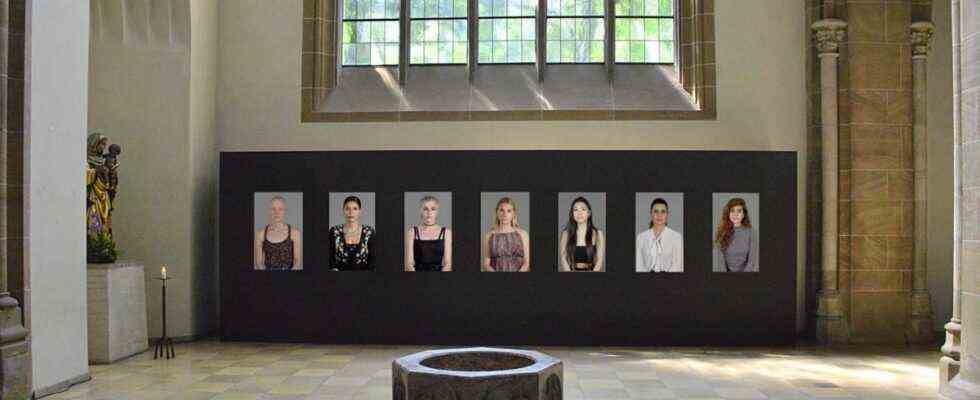A photo, says Stefan Hunstein, is a hundred and twenty-fifth of a second on a piece of paper. The older ones know that about us, for the younger ones a photo is something that lives on the phone and that you tap on the phone to take. Without influencing much. But a photo can also be longer if the object to be photographed is still, perhaps a sixtieth of a second. But the result is still a piece of paper that doesn’t show the time. Now Hunstein is in the Paulskirche at Munich’s Theresienwiese 21 photos that aren’t because they have a duration. Not the length of time that a viewer can use for it, that would be as long as you like. Rather, it takes two minutes to create and present the image. “From Eternity to Eternity” is a video installation with 21 women, but not a film installation because the narration is the image alone. It is more like a living photo installation, if there is such a thing, and it can be seen in St. Paul until Lent begins.
Rainer Hepler, the art pastor of the local archdiocese who has been living in St. Paul for a long time, and Stefan Hunstein worked together for the first time in 2000, at that time in St. Bonifaz, one as an artist, the other as an enabler. At that time, Hunstein was primarily known as an actor, at that time he was still with Dieter Dorn at the Kammerspiele. A Dorn ensemble has long since ceased to exist, but there are now numerous photo books, exhibitions, and installations by the photo artist Hunstein, who is still an actor. A few days after the opening of the exhibition in St. Paul, it premiered in Bochum.
Stefan Hunstein at work as a photographer.
(Photo: Stefan Hunstein)
Hepler says he cares about autonomous art in the church. Many churches are full of pictures, but these depict what the Bible already tells with rich images. But since, according to Hepler, man was created according to God’s likeness, every image of man is also an encounter with God. And so the human encounter is also in good hands in the church, whose parishioners may not all go to the museum often, so the art comes to them. Woodwork by Rudolf Wachter has been standing in the sanctuary of St. Paul for more than ten years. Years ago, Hepler and Hunstein built the black wall with the seven screens that now house “From Eternity to Eternity” in the dull, right aisle.
They are images of people, not Madonnas
21 women, each one looks friendly into the camera. No distraction. You can immerse yourself in the sight, you can speculate about each and every one of the women, you can see them, seven next to each other, as a tableau, each one incredibly beautiful, animated, pure, open. After two minutes the picture changes, in the transition a hybrid appears for a second. Since the transitions are offset, the tableau never repeats itself in its entirety, the composition of the women is always different.
They are images of people, not Madonnas. With this, Hunstein is continuing what he has already done twice, also here in St. Paul. It is a trilogy, the first part was dedicated to archaic images of men, faces full of furrows. The second part showed young people from the “Global Village”. And now, the third? Logically, although the second part already bore the title “Future”, it shows another one. A future that is feminine.
Hunstein’s installation also immanently poses the question of what if God were a woman. Rainer Hepler does not find the question uninteresting in terms of church politics, but also says, grinning, that this is a junk, since God is neither man nor woman. However, at least in the Western-Christian-Catholic culture, the narrative of God is clearly subject to the masculine. Now you can not only immerse yourself in the friendly nature of these women right in front of the installation, no, you can feel them everywhere in the large church space. They are an offer for contemplation, of immersion, which one can only do justice to if one devotes a little time to it. And it’s not an art that requires intellectual guidance. Hepler: “As a church, we have to offer a lot more low-threshold options.” On some Sunday evenings in St. Paul there will be a devotion without ritual, without Eucharist, but with music, with texts that actors read. And always with them, whether clearly or subcutaneously in the background, 21 women who calmly and serenely announce a human condition that makes you look forward to the future.

